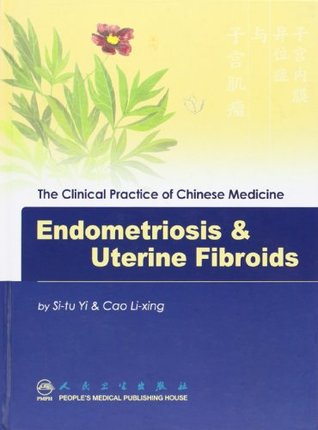Full Download Endometriosis and Uterine Fibroid (Clinical Practice of Chinese Medicine) - Si-tu Yi | PDF
Related searches:
Uterine Fibroids - Symptoms, Causes, and Treatments
Endometriosis and Uterine Fibroid (Clinical Practice of Chinese Medicine)
Uterine Fibroids: Symptoms, Diagnosis and Treatment Live Science
Uterine Fibroids and Your Period Everyday Health
JCM Special Issue : Diagnosis and Management of Endometriosis
The incidence of endometrial hyperplasia with uterine fibroids and
2676 1775 3386 2330 4016 2323 751 4977 1747 281 3062 4630 3678 2180 4351 2062 23 3523 1123 384 1246 1794 2243 1927 4611 1669 1572 1622 248
Some fibroids grow outside the uterus (submucoscal fibroids), changing the shape of the uterus and making it harder to get pregnant.
Endometriosis typically caused pain symptoms (dysmenorrhea, deep dyspareunia, non-menstrual pelvic pain, and dyschezia) and infertility.
Aim – to identify the underlying mechanisms of endometriosis and uterine fibroids and their associated symptoms to improve the outcome of affected women.
Jan 22, 2020 already used to treat the pain of endometriosis, can significantly reduce the chances of heavy menstrual bleeding caused by uterine fibroids,.
Women experiencing pelvic pain may be able to place the blame on fibroids. Fibroids are benign growths in or outside of the uterus that can range in size from a pea up to the size of a melon.
The myometrium contracts during menstruation to help expel the sloughed endometrial lining.
This patient faq explains what uterine fibroids are, as well as diagnosis and treatment options.
Endometrial ablation is when the lining of the uterus is removed or destroyed by using laser, wire loops, freezing or other methods to control very heavy bleeding.
Myomectomy: this surgery removes fibroids but leaves the healthy parts of your uterus. Endometrial ablation: uterine fibroid embolization (ufe), also called.
Fibroids grossly appear as round, well circumscribed (but not encapsulated), solid.
Endometrial ablation: destroys the lining of the uterus; uterine artery embolization (uae): cuts off blood supply to the fibroid and causes it to shrink; mri-guided.
While growths in your uterus may sound alarming, the fact is that uterine fibroids are very common and mostly harmless.
Uterine fibroids, or noncancerous growths that develop in or around the uterus, can contribute to symptoms like heavy menstrual bleeding and period pain.
Uterine fibroids: what are the symptoms? you may not know you have uterine fibroids because they often cause no symptoms. If you do have fibroids that are giving your problems, it may be because of where they’re located, the number you have.
In what places, outside of the uterus, do areas of endometriosis grow? most endometriosis is found in the pelvic cavity: on or under the ovaries; behind the uterus.
Whether you have recently been diagnosed or you think you might have uterine fibroids, learn about what symptoms you may experience. Andrea chisolm, md, is a board-certified ob/gyn who has taught at both tufts university school of medicine.
Endometrial ablation: the laser removal of fibroids; hysterectomy: the removal of the uterus; uterine fibroid embolization (ufe): a minimally invasive treatment.
Uterine fibroids are tumors or lumps made of muscle cells and other tissue that grow within endometrial ablation destroys the endometrial lining of the uterus.
Fibroids are non-cancerous growths that can occur anywhere in the uterus but originate from the muscle of the womb.
It is estimated that 20 to 40 percent of all american women have uterine fibroids, masses of smooth muscle cells that grow in the uterus.


Post Your Comments: